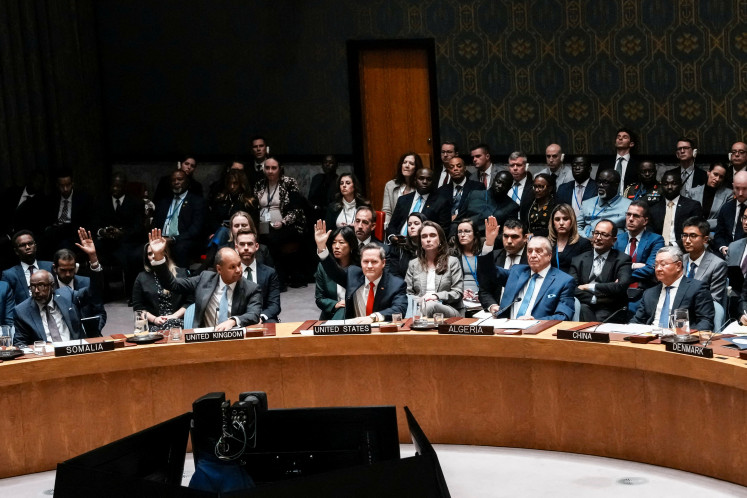Popular Reads
Top Results
Can't find what you're looking for?
View all search resultsPopular Reads
Top Results
Can't find what you're looking for?
View all search resultsLetters: Global warming and carbon credits
Environmentalists and energy economists have long been voicing concern over the rise in the level of greenhouse gases (GHG) , which lead to global warming and climatic changes that are detrimental to economies worldwide
Change text size
Gift Premium Articles
to Anyone
Environmentalists and energy economists have long been voicing concern over the rise in the level of greenhouse gases (GHG) , which lead to global warming and climatic changes that are detrimental to economies worldwide.
Greenhouse gases prevent solar energy from escaping into the atmosphere. This traps heat, and causes global warming accompanied by a rise in sea levels, changes in weather patterns and an increase in global mean rates of precipitation and evaporation, which will have grave impact on agriculture and water resources.
In the last few years, the world has witnessed frequent catastrophes, such as severe drought, heavy rain cycles, cloudbursts, longer and more extreme heat waves, the spread of tropical diseases such as sars, bird flu, damage to vegetation and agricultural systems due to pests and threats to coastlines due to higher sea levels and storm surges.
While finding solutions to the problem, the concept of "carbon credits" came in vogue as part of an international agreement, popularly known as the Kyoto Protocol. Carbon credits basically seek to encourage countries to reduce their greenhouse gas emissions, as it rewards those countries that meet their targets and provides financial incentives to others to do so as quickly as possible.
In simple terms, carbon credits are certificates issued to the countries that reduce their GHG emissions, which otherwise cause the depletion of the atmosphere's ozone layer, leading to global warming. Surplus credits (collected by overshooting the emission reduction targets) can be sold in the market.
Trading in carbon credits rewards countries that meet their target and provide financial assistance to others to do so as soon as possible. Surplus credits can be sold in the market. One credit is equivalent to one tonne of reduced CO2 emissions. Foreign countries that cannot fulfill the protocol norms can buy the surplus credits from companies in other countries through trading.
Through this carbon trading system, big polluters in developed countries can pay companies in developing nations to cut emissions in their stead. Since many factories in developing countries use dirty, inefficient processes, it's often cheaper to clean them up than to replace the more modern equipment used in wealthy nations.
The catch however is the cost; developed countries have to spend nearly US$300-500 for every tonne reduction in CO2, as against $10-25 to be spent by developing countries. The stage is thus set for trade to flourish. Trading carbon credits is hence seen as a less expensive option.
The Clean Development Mechanism (CDM) has been put in place to facilitate the trade of carbon credits between developing and developed nations by the UN Framework Convention on Climate Change. To date, the CDM has held little significance, as there was no accredited body recognized by the UN. Not any more.
Monetary gain is, of course, first and foremost what attracts such trade. Every tonne of CO2 not emitted is considered as one credit and every carbon credit fetches the company handsome money. The remuneration continues year after year.
The carbon market grew in value to an estimated $21.5 billion in the first three quarters of the year, more than doubling in value from the previous year The market was dominated by the European Union Emissions Trading Scheme (EU ETS), which shrugged off signs of weakness following the sharp declines that accompanied the release of verified emissions data in May 2006.
Sunil K Kumbhat
Jodhpur (Rajasthan), India
















